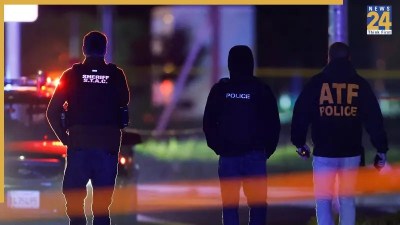Washington: In a bizarre situation that is projecting reigns of fear over the fate of the United States of America, as the government is facing an unprecedented turn of events the outcome of which is being feared by many. The federal government is heading towards a shut down which is set to disrupt vital services, strain the workforce, and inject political turmoil into the nation’s capital. The House of Representatives, driven by the hard-right faction demanding substantial spending cuts, is steering the ship toward a fiscal impasse.
While certain government functions will continue , such as the distribution of Social Security benefits, a slew of non-essential activities will grind to a halt. As the nation braces for a potential shutdown on October 1, here’s what you need to know about this precarious situation.
What exactly is a government shutdown?
In essence, a government shutdown transpires when Congress falters to pass the necessary funding legislation, subsequently signed into law by the President. Congress should ideally pass a dozen distinct spending bills to allocate funds across government agencies, but this process can be cumbersome. To keep the government operational during budgetary negotiations, Congress often resorts to a temporary extension known as a continuing resolution (CR).
When funding legislation remains elusive, federal agencies are compelled to suspend all non-essential activities. Consequently, millions of federal employees, including military personnel, cease to receive their paychecks. Thanks to a 2019 law, these furloughed workers are entitled to backpay once the funding deadlock is resolved.
When could a shutdown commence and how long might it last?
The clock is ticking, with government funding set to expire on October 1, marking the inception of the federal budget year. Should Congress fail to secure a funding plan endorsed by the President, the shutdown will take effect at the stroke of midnight.
Estimating the duration of a shutdown is a complex undertaking. A divided Congress—comprising a Democratic-controlled Senate and a Republican-led House—coupled with Speaker Kevin McCarthy’s conservative faction seeking spending concessions, hints at a potential weeks-long standoff.
Who Bears the brunt of a shutdown?
The ramifications of a government shutdown ripple far and wide, particularly affecting the millions of federal workers. Among them are approximately two million military personnel and over two million civilian employees scattered across the nation. A significant portion—nearly 60%—of these federal workers is distributed among the Department of Defense, Veterans Affairs, and Homeland Security.
A shutdown’s ripple effects extend beyond the federal workforce. Government services, including clinical trials, firearm permit applications, and passport issuance, may experience delays. Businesses tethered to the federal government, such as federal contractors and tourist services near national parks, could encounter disruptions and economic downturns. The travel sector, for instance, could hemorrhage a staggering $140 million daily during a shutdown, as per the U.S. Travel Industry Association.
Furthermore, lawmakers caution that a shutdown might unsettle financial markets. Goldman Sachs projects a 0.2% weekly reduction in economic growth during a shutdown, with subsequent rebound upon government reopening. It’s not solely the financial toll, as the breakdown in government services can erode confidence in the government’s ability to fulfill its core obligations, a concern underscored by the U.S. Chamber of Commerce.
Implications for Court Cases, Congress and Presidential Pay
Amid a shutdown, the President and Congress will continue their duties and retain their salaries. However, non-essential staff members will face furloughs.
The judicial branch will persevere for a limited duration using funds accrued from court filings and fees, along with approved funding.
Notably, funding for three special counsels, including those handling cases involving former President Donald Trump and President Joe Biden’s son, Hunter Biden, remains unaffected. These positions operate on a permanent, indefinite appropriation, historically insulated from government shutdowns.
Historical Context: Shutdowns through the years
Government shutdowns were relatively rare until the 1980s when then-U.S. Attorney General Benjamin Civiletti issued legal opinions asserting that agencies could not operate during a funding gap. Since 1976, there have been 22 funding gaps, with a significant portion resulting in worker furloughs. Most notable shutdowns have unfolded during Bill Clinton’s presidency and more recently in 2018-2019 during the standoff over border wall funding.
How to end a shutdown?
Ultimately, it falls upon Congress to fund the government. Both the House and Senate must reach consensus on a funding resolution, subsequently endorsed into law by the President. Continuing resolutions are often employed as stopgap measures to fund government offices temporarily during budget negotiations. Vital national priorities, such as disaster relief for natural disasters, are frequently tethered to short-term bills.
However, staunch Republican factions refuse to entertain temporary bills, advocating for the simultaneous negotiation of all 12 government funding bills. This protracted process typically extends until December at the earliest. Former President Trump, a formidable rival to President Biden in the 2024 election, has thrown his weight behind these hardline Republicans. If they succeed, a prolonged shutdown lasting weeks or even longer looms on the horizon.













